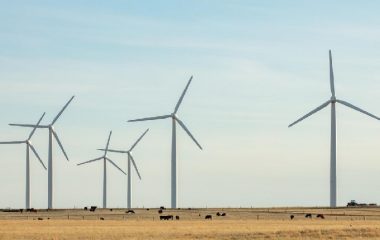
Photo: Pixabay/PublicDomainPictures
Even though the cost of low-carbon hydrogen production remains uncompetitive, and its output and use limited, there are encouraging signs that significant cost declines and widespread global growth may be at hand, according to a new report by the International Energy Agency (IEA). However, governments need to take decisive action to enable hydrogen to fulfill its potential and help the world reach net zero emissions by 2050, the IEA says.
The report, titled Global Hydrogen Review 2021, notes that investment in hydrogen production projects worldwide is increasing and that the number of countries that already have strategies for the use of the fuel has increased from just three in 2019 to 17 today, while more than 20 others have publicly announced they are working on such plans.
The global capacity of electrolyzers has doubled in the past five years, and supply could reach 8 million tons by 2030
The global capacity of electrolyzers has doubled over the last five years. If all electrolyzer projects currently under development are realized, global hydrogen supply from electrolyzers would reach 8 million tons by 2030, up from under 50,000 tons today. However, the level would still remain well below the 80 million tons that the IEA projects is required to help achieve climate neutrality by 2050.
According to Fatih Birol, the IEA’s executive director, the recent success should not be taken for granted as there have been “false starts” with hydrogen before. He added, however, that “…this time, we are seeing exciting progress in making hydrogen cleaner, more affordable and more available for use across different sectors of the economy.”
The world needs to invest USD 1.2 trillion in hydrogen by 2030
The IEA estimates that putting the hydrogen sector on a path consistent with global net zero emissions by 2050 requires USD 1.2 trillion in investment by 2030.
Governments need to act quickly to remove the barriers to a faster growth of low-carbon hydrogen. The main obstacle is the cost of its production as it requires either large amounts of electricity to produce it from water, or the use of carbon capture technologies if the hydrogen is produced from fossil fuels.
Green hydrogen can cost 2 to 7 times as much as hydrogen made with natural gas
Investments and policies are needed to close the price gap between low-carbon hydrogen and emissions-intensive hydrogen. Green hydrogen, produced from renewables, can cost between 2 and 7 times as much as hydrogen made with natural gas without carbon capture, which is why almost all hydrogen produced today comes from fossil fuels without carbon capture.
On the other hand, technological advances and economies of scale could make the cost of making hydrogen with solar PV electricity competitive, the IEA said in the report. It also noted that the cost of fuel cells that run on hydrogen continues to fall, and sales of hydrogen-powered vehicles are growing.
Apart from mobilizing investment in research, production, and infrastructure, policies recommended in the report include carbon pricing, quotas, and hydrogen requirements in public procurement. The IEA also calls for international cooperation to establish standards and regulations, and to create global hydrogen markets.





















Be the first one to comment on this article.